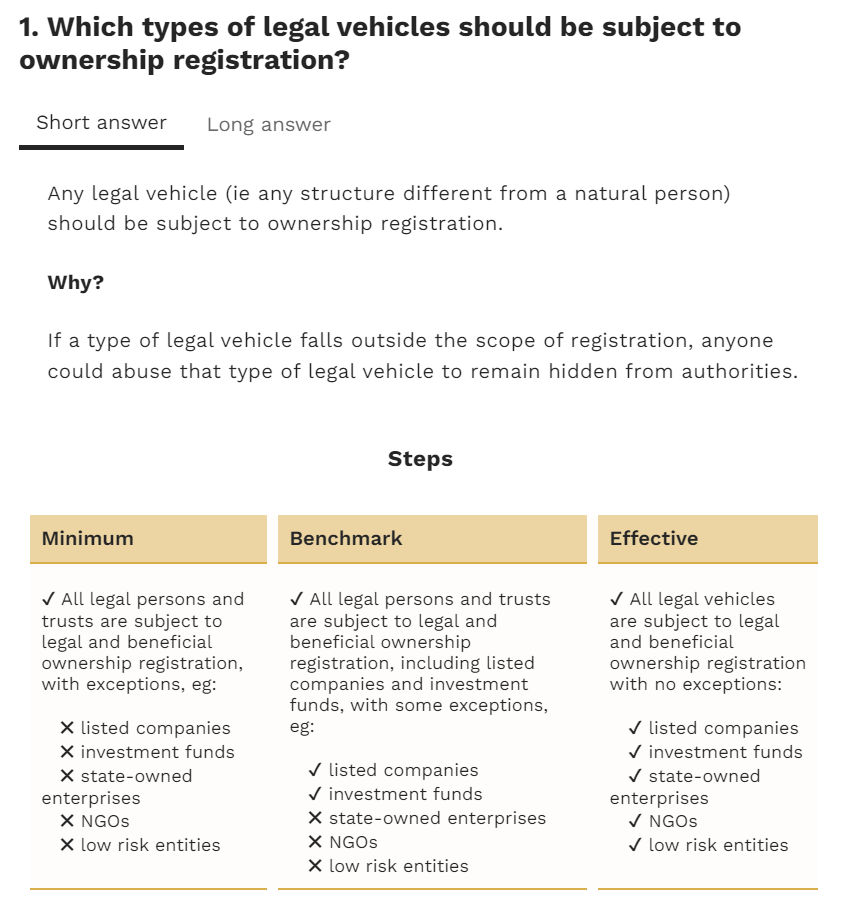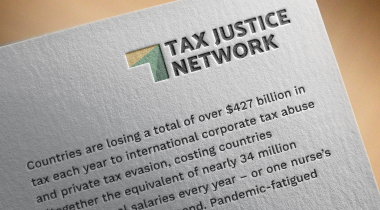
Andres Knobel ■ 10 targets every country’s beneficial ownership laws should meet (and how to meet them effectively)

After years of experience assessing countries’ frameworks on legal and beneficial ownership registration and working closely with authorities, experts and researchers, the Tax Justice Network is publishing its ‘Roadmap to Effective Beneficial Ownership Transparency’ (REBOT). The roadmap sets out a guiding north star for achieving a truly transparent beneficial ownership framework that can effectively address illicit financial flows, money laundering, corruption, tax abuse and other financial crimes.
Beneficial ownership transparency (ie the identification of the individuals made of flesh and blood who ultimately own, control or benefit from companies and other types of legal vehicles) has garnered significant momentum among policymakers and campaigners over the past two decades. Many countries have approved beneficial ownership frameworks in recent years, but almost all these frameworks remain incomplete in one way or another. What this has all meant is no country today has yet managed to make use of the full potential of beneficial ownership transparency to rein in financial secrecy and its harmful impacts.
The Tax Justice Network’s Roadmap to Effective Beneficial Ownership Transparency sets out 10 targets that governments should meet in their framework:
1. The types of legal vehicles that should be subject to ownership registration.
2. The persons who should be identified as legal owners.
3. The individuals who should be identified as beneficial owners.
4. The conditions that should trigger required ownership registration.
5. The identification details that legal and beneficial owners should be required to register.
6. How frequently legal and beneficial ownership registries should be updated.
7. Those who should have access to legal and beneficial ownership registries, and how registries should be accessed.
8. How beneficial ownership registries should verify the integrity of information submitted.
9. How sanctions should be used in cases of non-compliance with legal and beneficial ownership registration requirements.
10. Special cases that should be considered in determining legal and beneficial ownership registry frameworks.
For each target, the roadmap sets out different steps governments can take to reach either a minimum, a benchmarked or an effective level of transparency. Minimum transparency is the minimum level of laws and rules that should be applied for a country to be considered to be practicing beneficial ownership transparency. Benchmarked transparency is the most robust level of laws and rules that are already being used in at least one country. While these instances of better practice are more robust than the minimum transparency level exercised by most governments, they still fall short of effective transparency (for example, due to limited scope or to loopholes). Effective transparency is the iron-clad level of laws and rules that deliver caliber of transparency needed to effectively prevent and prosecute illicit financial activity, to ensure the rule of law, and eliminate secrecy loopholes and workarounds.

Only when a government reaches an effective level of transparency on all 10 targets will its beneficial ownership framework be effective at reining in financial secrecy, but the steps from minimum to effective transparency for each target are designed to set a clear and practical path for governments to steadily reach effective transparency. This provides governments with policy solutions that can be implemented in the short and mid-term as they work towards effective beneficial ownership transparency.
The roadmap will continually be updated as we learn of or develop new ways to improve the most transparent frameworks. If you would like to share any ideas on how to make beneficial ownership frameworks more effective, or if you know of an instance of “effective transparency” that is already being implemented by a country (and so should be categorised as “benchmarked transparency”), please contact Andres Knobel at [email protected].
View the ‘Roadmap to Effective Beneficial Ownership Transparency’.
Related articles

2025: The year tax justice became part of the world’s problem-solving infrastructure
One-page policy briefs: ABC policy reforms and human rights in the UN tax convention

The Financial Secrecy Index, a cherished tool for policy research across the globe

When AI runs a company, who is the beneficial owner?
Insights from the United Kingdom’s People with Significant Control register
13 May 2025

Uncovering hidden power in the UK’s PSC Register

New article explores why the fight for beneficial ownership transparency isn’t over
Asset beneficial ownership – Enforcing wealth tax & other positive spillover effects
4 March 2025

Tax Justice transformational moments of 2024


